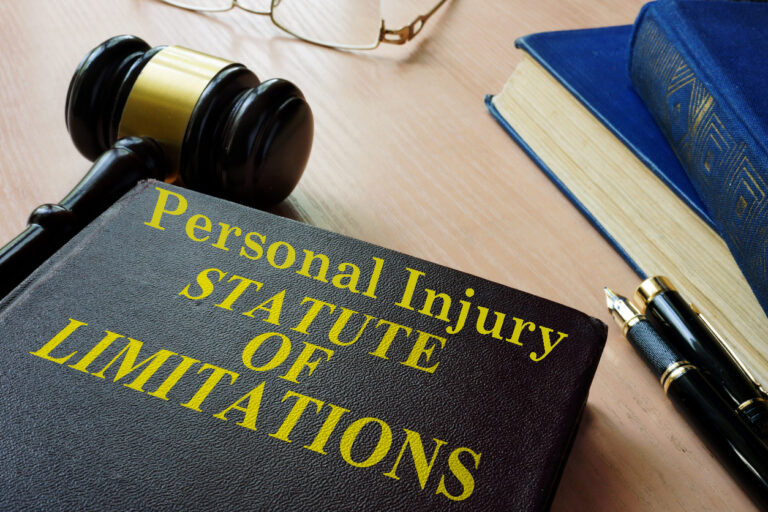Personal Injury Statute of Limitations by State, Plus Exceptions
Are you trying to file a personal injury claim? If you feel like you have a valid case after an accident, it is crucial to understand and pay attention to the relevant state’s statute of limitations. Below are the personal injury statute of limitations by state, as well as the important exceptions that may apply to your case.
So, How Does the Personal Injury Statute of Limitations Work?
All states in the United States have passed statutes of limitations to outline the strict deadline people have to file personal injury lawsuits in the state’s civil court system. Different states have different statutes of limitations, especially when it comes to the nature of the injury (including slip and fall accidents).
For example, Louisiana’s personal injury statute of limitations is 1 year, while Maine’s is 6 years. It is necessary to know the statute of limitations in your state because your case will almost certainly be dismissed if you file a claim after the deadline has passed.
Usually, the statute of limitations starts running from the day the slip and fall accident/personal injury occurred.
Personal Injury Statute of Limitations by State
- Alabama — 2 years
- Alaska — 2 years
- Arizona — 2 years
- Arkansas — 3 years
- California — 2 years
- Colorado — 2 years; 3 years for claims involving motor vehicles
- Connecticut — 2 years
- Delaware — 2 years
- Florida — 4 years
- Georgia — 2 years
- Hawaii — 2 years
- Idaho — 2 years
- Illinois — 2 years
- Indiana — 2 years
- Iowa — 2 years
- Kansas — 2 years
- Kentucky — 1 year; 2 years for claims involving motor vehicles
- Louisiana — 1 year
- Maine — 6 years
- Maryland — 3 years
- Massachusetts — 3 years
- Michigan — 3 years; 1 year for PIP claims
- Minnesota — 2 years
- Mississippi — 3 years
- Missouri — 5 years
- Montana — 3 years
- Nebraska — 4 years
- Nevada — 2 years
- New Hampshire — 3 years
- New Jersey — 2 years
- New Mexico — 3 years
- New York — 3 years
- North Carolina — 3 years
- North Dakota — 6 years
- Ohio — 2 years
- Oklahoma — 2 years
- Oregon — 2 years
- Pennsylvania — 2 years
- Rhode Island — 3 years
- South Carolina — 3 years
- South Dakota — 3 years
- Tennessee — 1 year
- Texas — 2 years
- Utah — 4 years
- Vermont — 3 years
- Virginia — 2 years
- Washington — 3 years
- West Virginia — 2 years
- Wisconsin — 3 years
- Wyoming — 4 years
Exceptions to the Statute of Limitations: the “Discovery Rule”
There is an exception to every rule, which is also the case with the statute of limitations. Under the so-called “discovery rule,” you can be subject to an exception to the deadline for filing a personal injury claim. The rule is valid in case the injured person did not know or had no reasonable way of knowing, that:
- The potential defendant’s actions may have caused the injury in question
- They suffered an injury
Let’s look at an example to simplify this. Let’s say you live in California. The personal injury statute of limitations in California is 2 years. However, California is one of the states that apply the discovery rule, which states that the statute of limitations does not begin running until the date the plaintiff:
1) knew or had sufficient reason to notice the cause of the harm;
2) knew or had sufficient reason to notice that they were injured.
In other words, you may notice the cause or experience symptoms many years after the personal injury has occurred (eg. minor blows to the head causing a lesion years later or long-term effects from hazardous substances). You would still be able to file a personal injury claim if you can prove the injury resulted from the accident and you had no way of discovering it sooner.
Ways to Extend the Standard Deadline
In addition to the “discovery rule,” there are several other ways to extend the standard statute of limitations in your state. For example, if the defendant has left the state for a period of time following the accident they have caused (that caused your injury), the statute of limitations “clock” may pause in most states.
If, for example, the statute of limitations in your state was two years, and the defendant left the state for a year after the accident, then the statute of limitations would be extended by one more year in your case. Of course, you will have to verify that this applies to your state.
Another reason to extend the deadline may be if your claim falls under special lawsuit-filing rules (e.g., the plaintiff is a minor, mentally ill, or under the age of 18).
If you have any questions about the personal injury statute of limitations in California or any other state, be sure to turn to an experienced attorney.
Find a Personal Injury Attorney in Your Area

